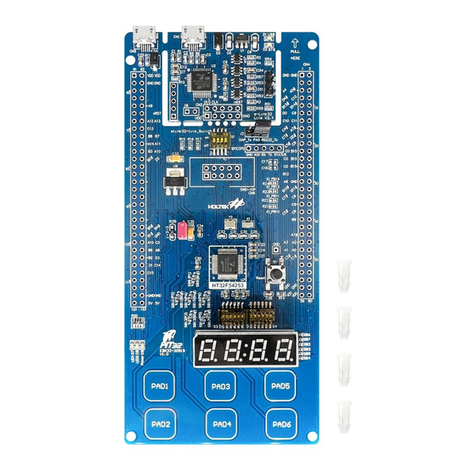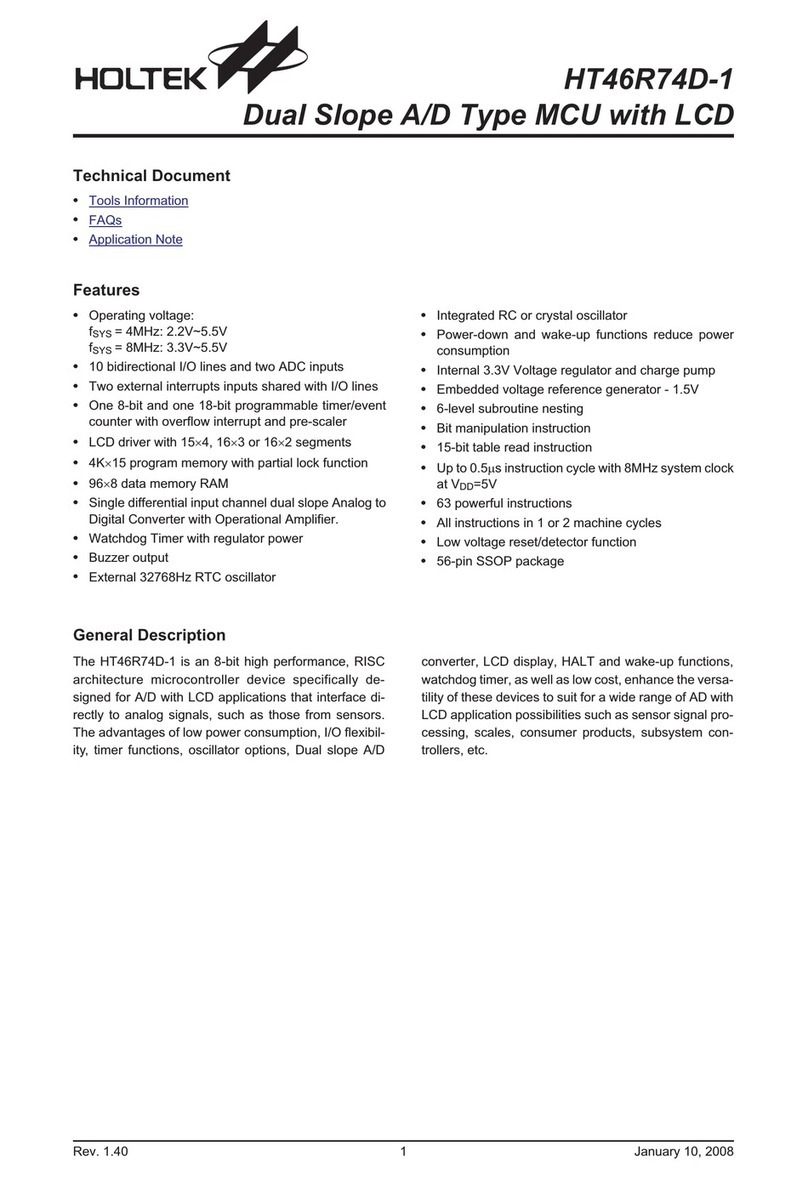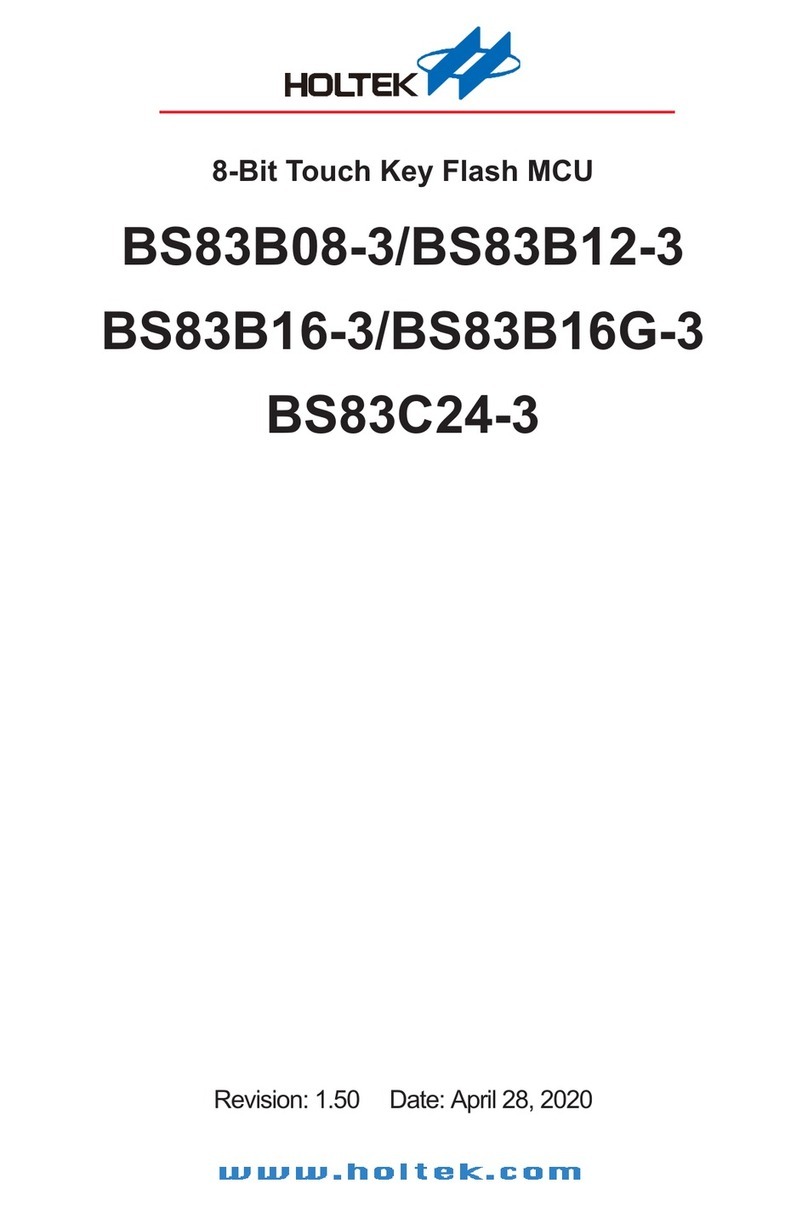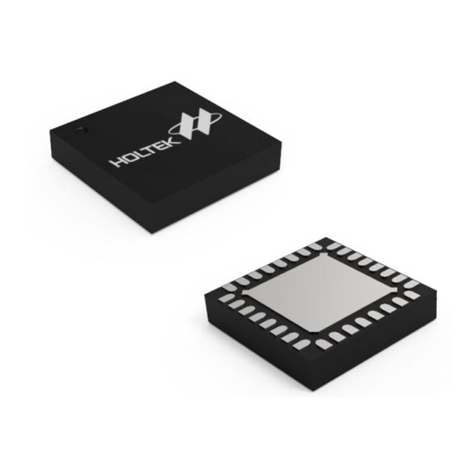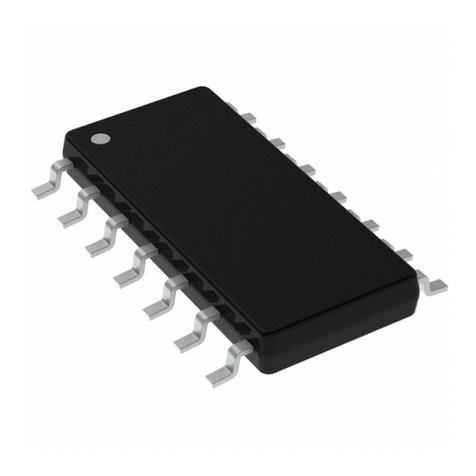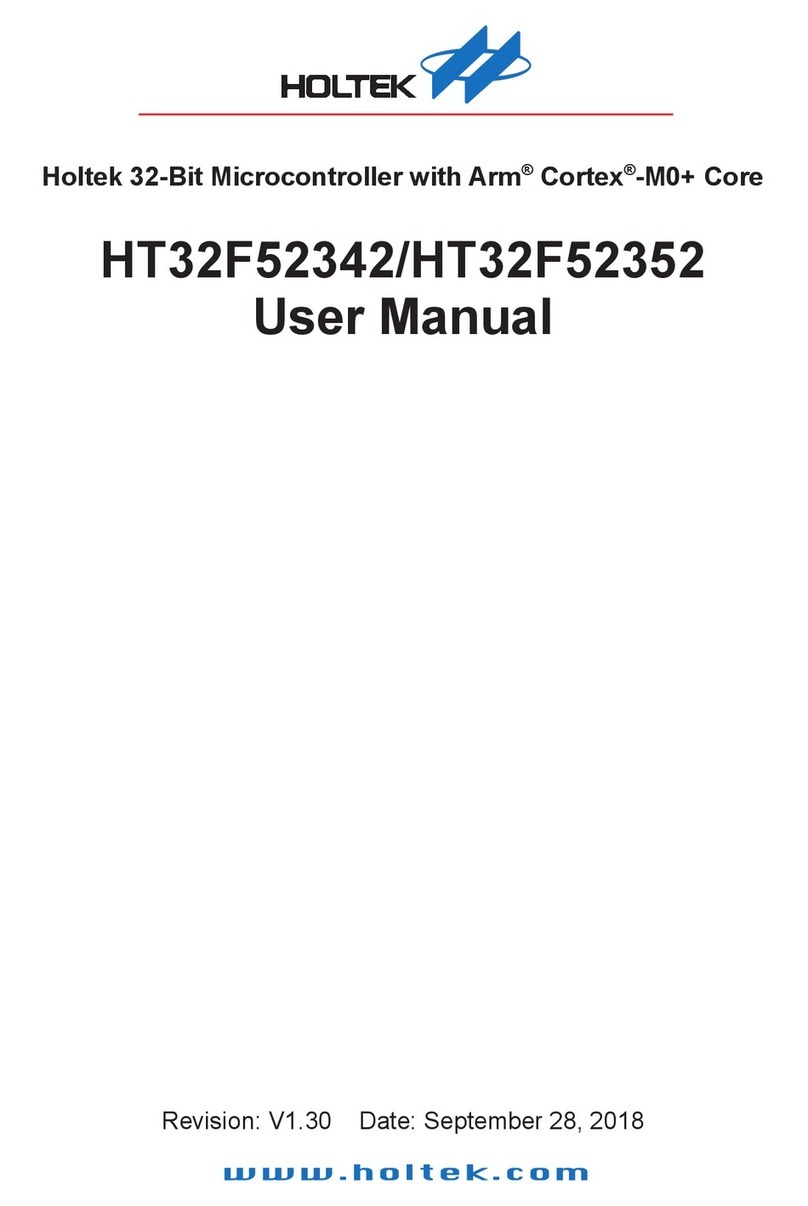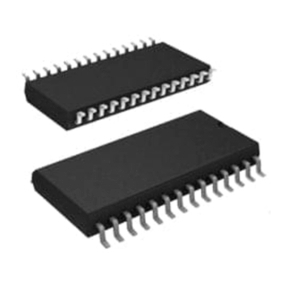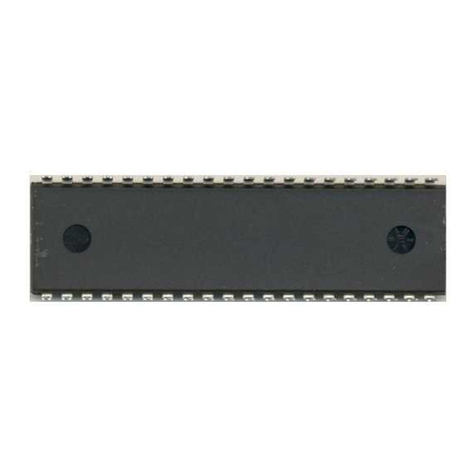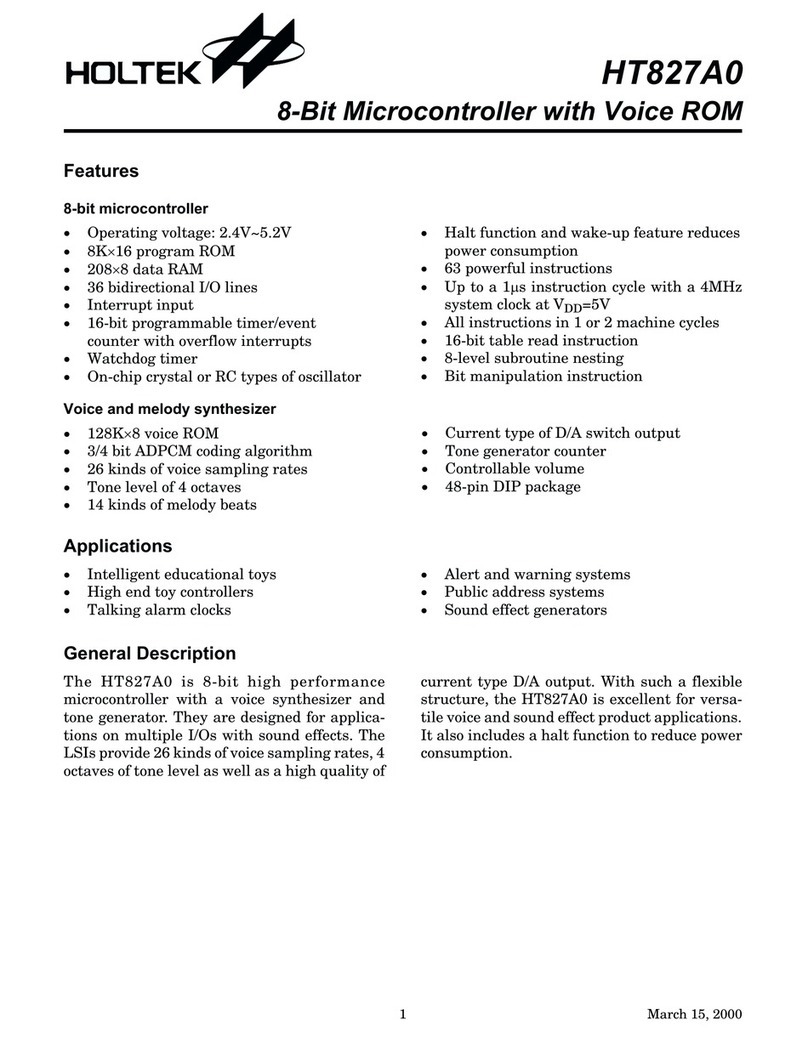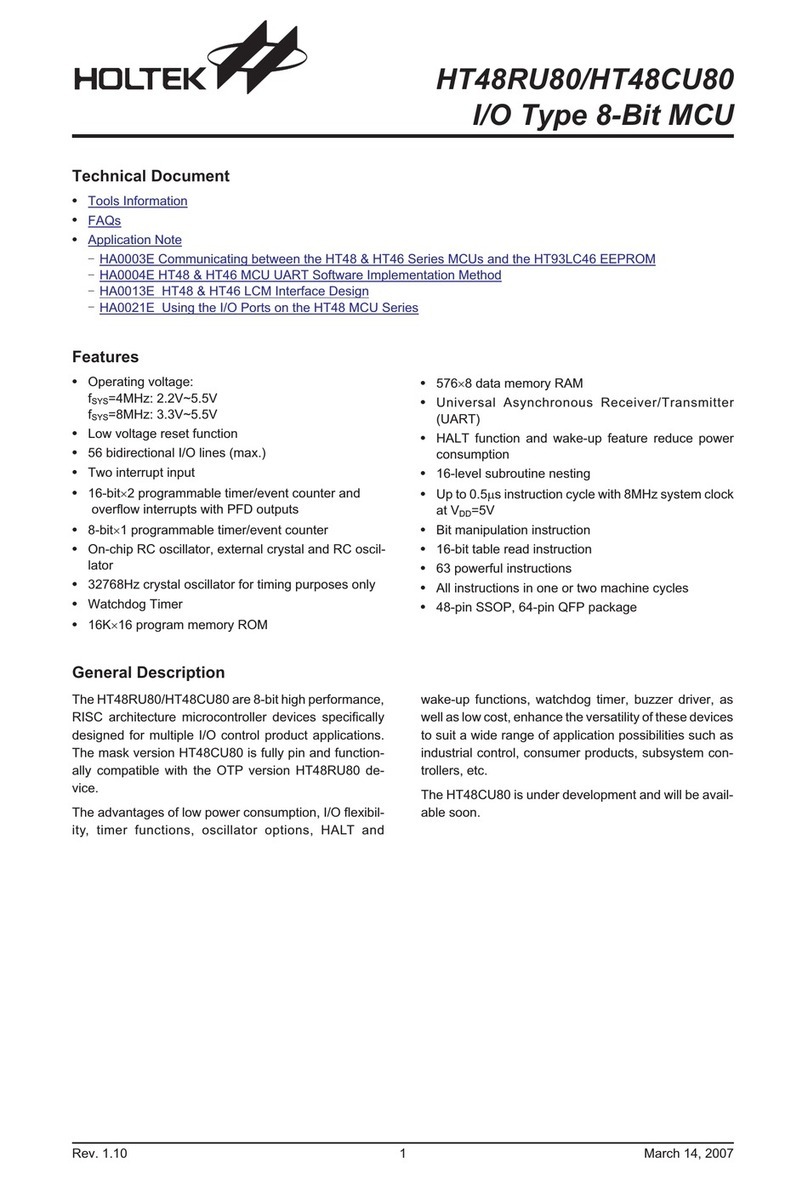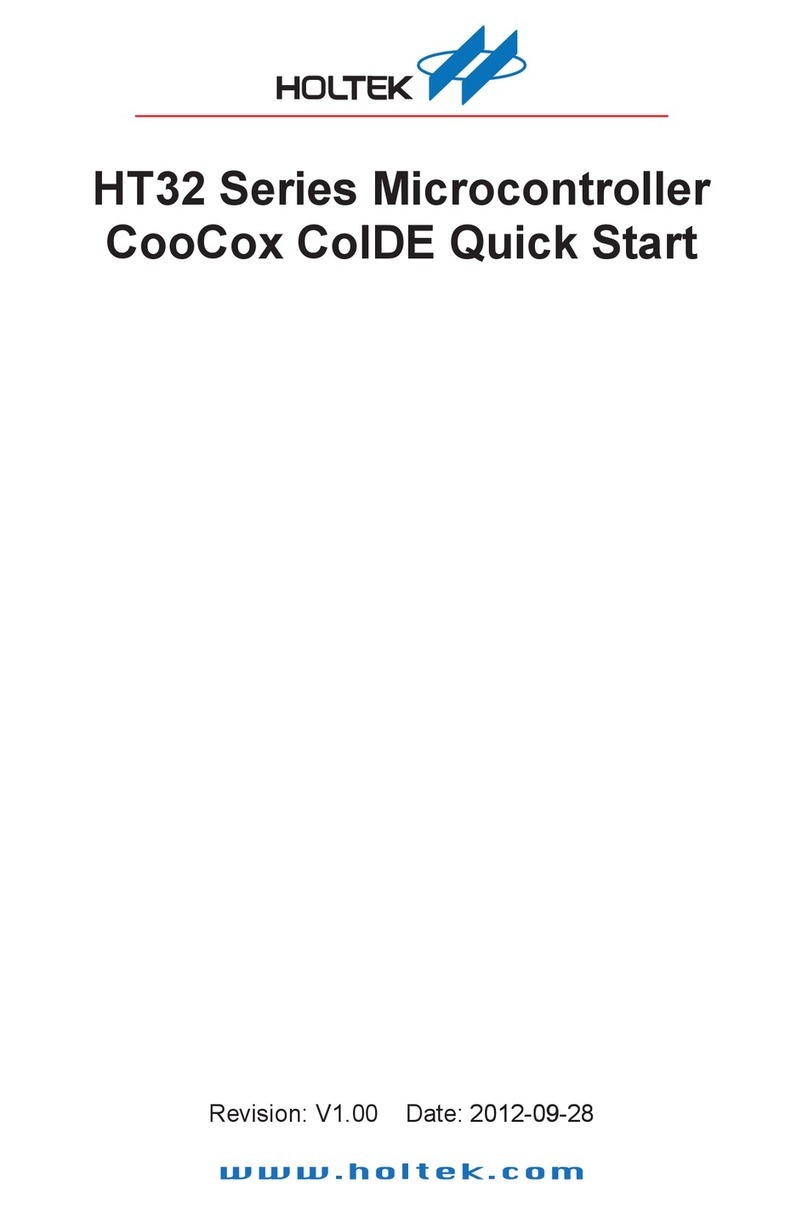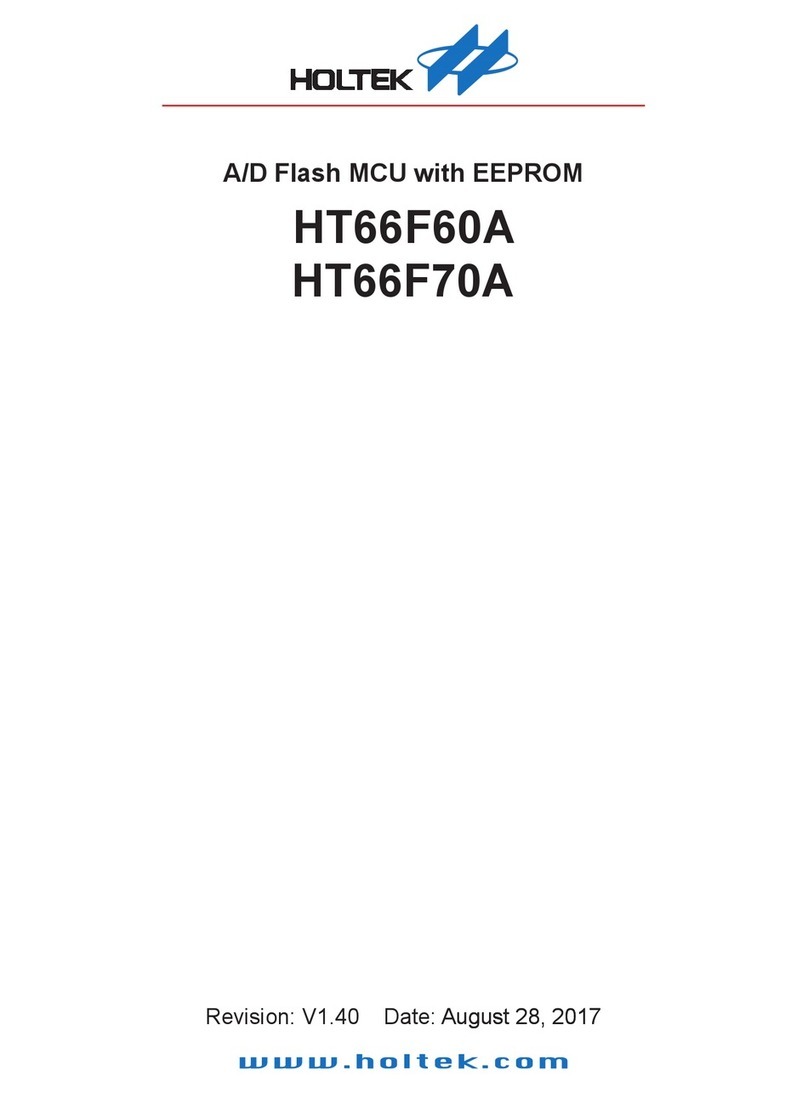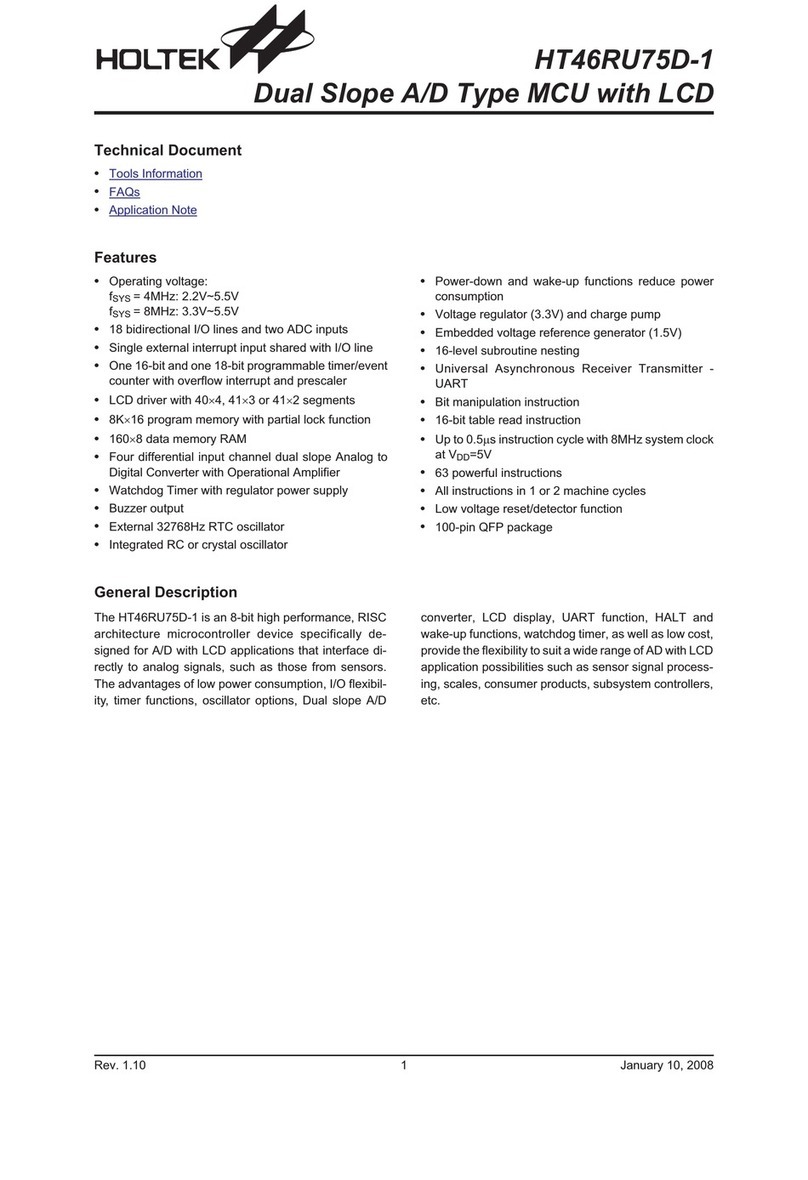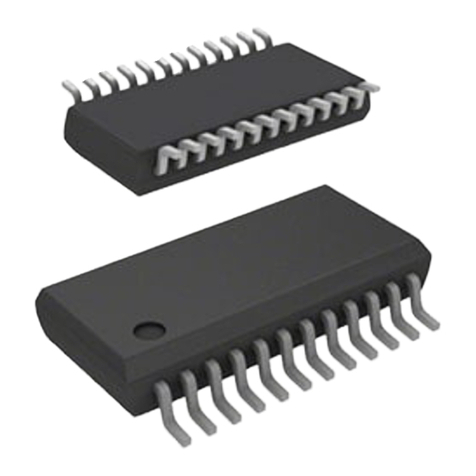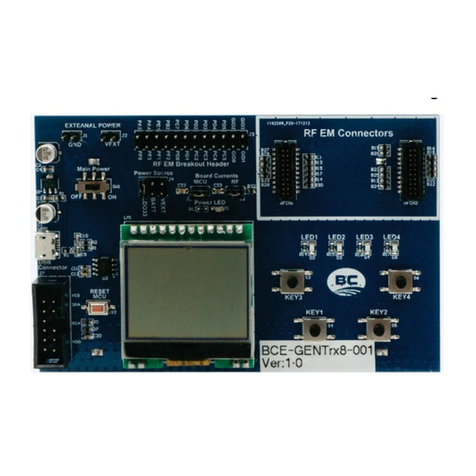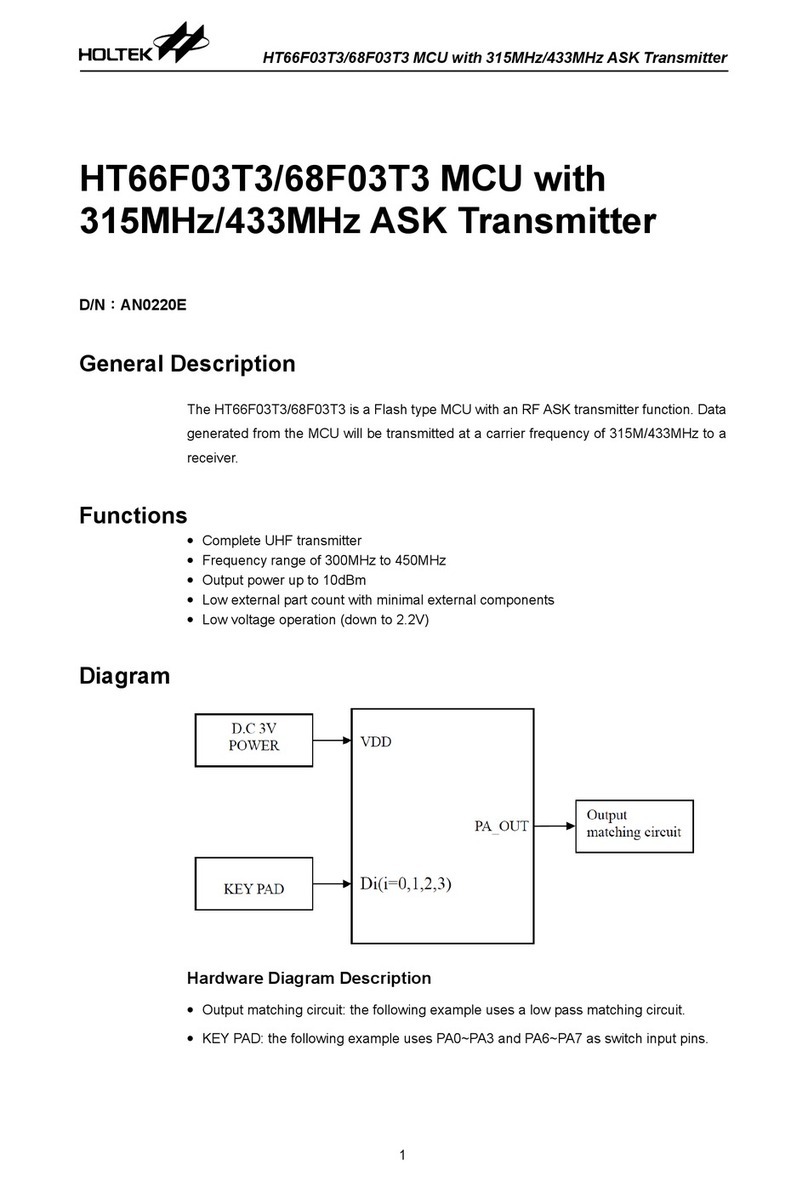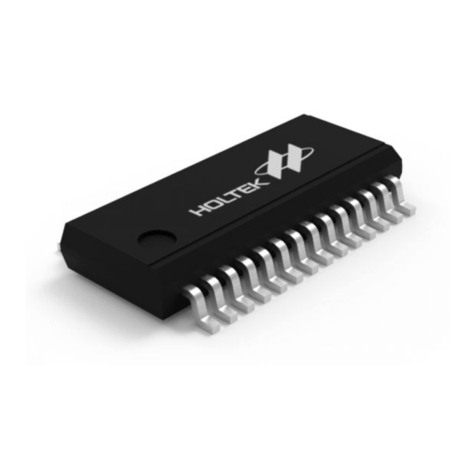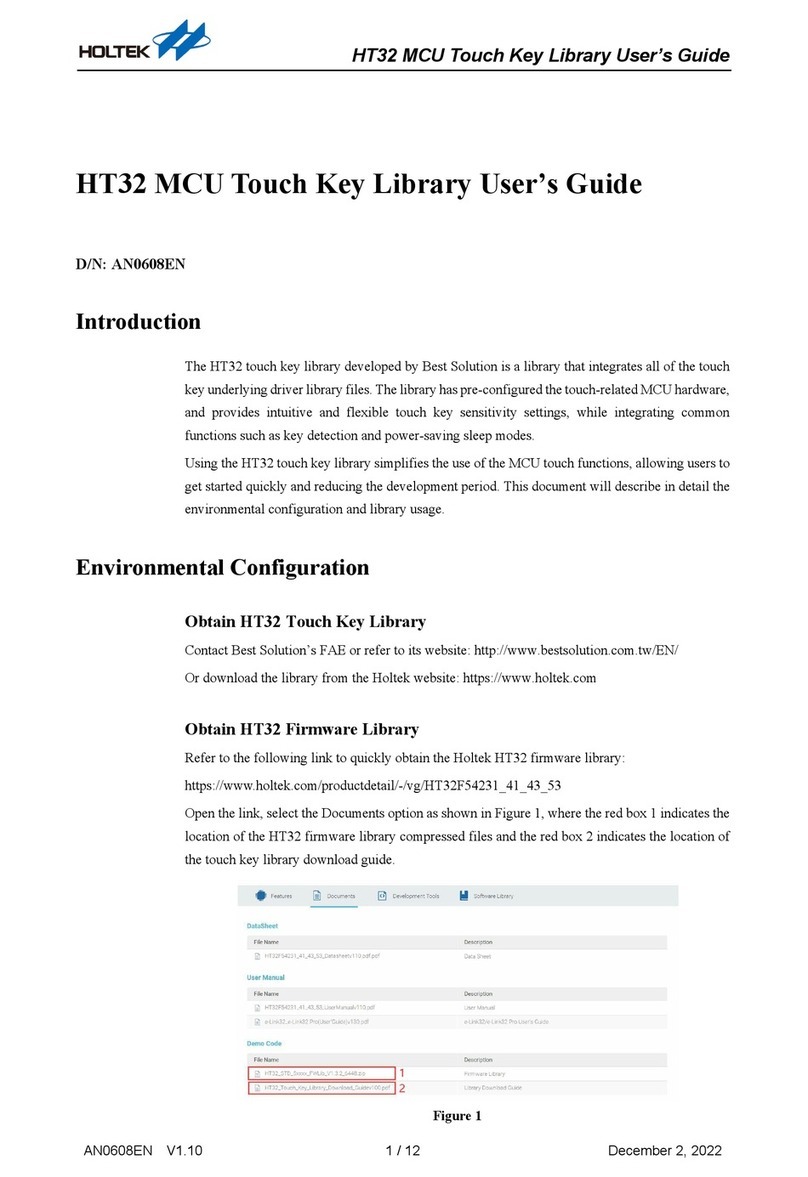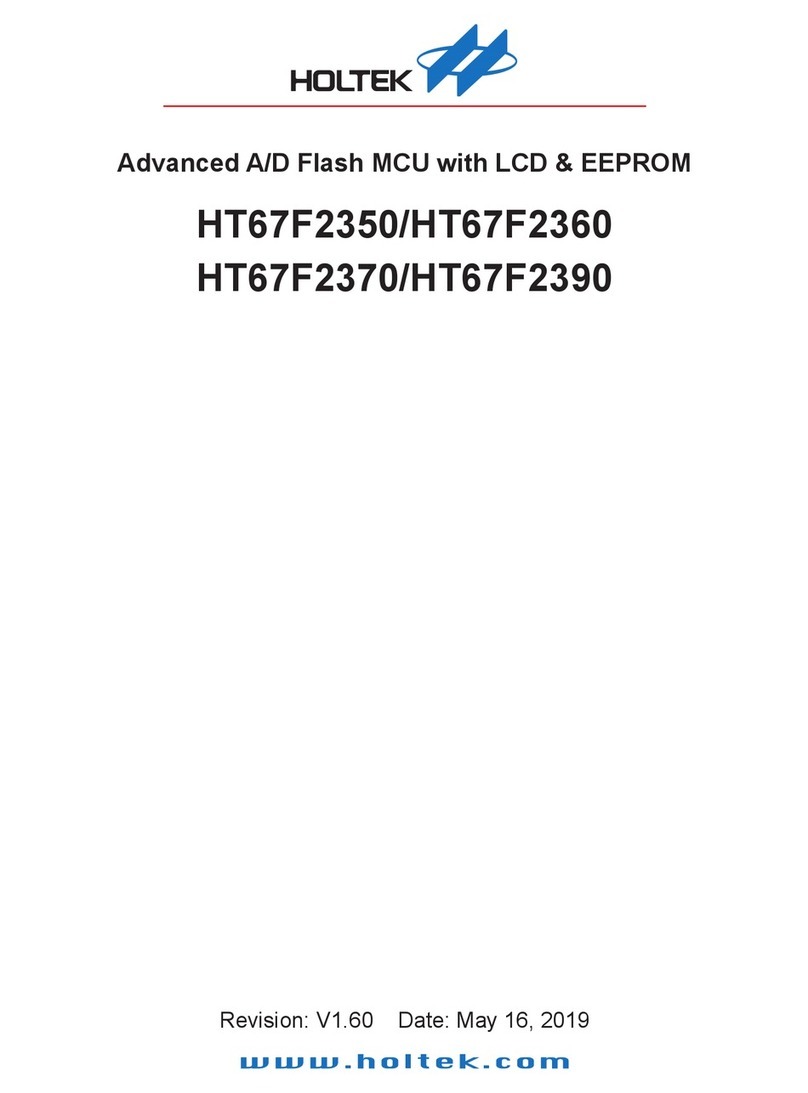HT46R46/C46/R47/C47/R48A/C48A/R49
Rev. 1.41 10 December 30, 2008
Stack
This is a special part of the memory which is used to
save the contents of the Program Counter only. The
stack can have either 4 or 6 levels depending upon
which device is selected and is neither part of the data
nor part of the program space, and is neither readable
nor writable. The activated level is indexed by the Stack
Pointer, SP, and is neither readable nor writable. At a
subroutine call or interrupt acknowledge signal, the con-
tents of the Program Counter are pushed onto the stack.
At the end of a subroutine or an interrupt routine, sig-
naled by a return instruction, RET or RETI, the Program
Counter is restored to its previous value from the stack.
After a device reset, the Stack Pointer will point to the
top of the stack.
If the stack is full and an enabled interrupt takes place,
the interrupt request flag will be recorded but the ac-
knowledge signal will be inhibited. When the Stack
Pointer is decremented, by RET or RETI, the interrupt
will be serviced. This feature prevents stack overflow al-
lowing the programmer to use the structure more easily.
However, when the stack is full, a CALL subroutine in-
struction can still be executed which will result in a stack
overflow. Precautions should be taken to avoid such
cases which might cause unpredictable program
branching.
Note: For the HT46R46, 4 levels of stack are available
and for the HT46R47,HT46R48A and
HT46R49, 6 levels of stack are available.
Arithmetic and Logic Unit -ALU
The arithmetic-logic unit or ALU is a critical area of the
microcontroller that carries out arithmetic and logic op-
erations of the instruction set. Connected to the main
microcontroller data bus, the ALU receives related in-
struction codes and performs the required arithmetic or
logical operations after which the result will be placed in
the specified register. As these ALU calculation or oper-
ations may result in carry, borrow or other status
changes, the status register will be correspondingly up-
dated to reflect these changes. The ALU supports the
following functions:
·Arithmetic operations: ADD, ADDM, ADC, ADCM,
SUB, SUBM, SBC, SBCM, DAA
·Logic operations: AND, OR, XOR, ANDM, ORM,
XORM, CPL, CPLA
·Rotation RRA, RR, RRCA, RRC, RLA, RL, RLCA,
RLC
·Increment and Decrement INCA, INC, DECA, DEC
·Branch decision, JMP, SZ, SZA, SNZ, SIZ, SDZ,
SIZA, SDZA, CALL, RET, RETI
Program Memory
The Program Memory is the location where the user code
or program is stored. For microcontrollers, two types of
Program Memory are usually supplied. The first type is
the One-Time Programmable, OTP, memory where us-
ers can program their application code into the device.
Devices with OTP memory are denoted by having an ²R²
within their device name. By using the appropriate pro-
gramming tools, OTP devices offer users the flexibility to
freely develop their applications which may be useful
during debug or for products requiring frequent upgrades
or program changes. OTP devices are also applicable for
use in applications that require low or medium volume
production runs. The other type of memory is the mask
ROM memory, denoted by having a ²C²within the device
name. These devices offer the most cost effective solu-
tions for high volume products.
Structure
The Program Memory has a capacity of 1K by 14, 2K by
14 or 4K by 15 bits depending upon which device is se-
lected. The Program Memory is addressed by the Pro-
gram Counter and also contains data, table information
and interrupt entries. Table data, which can be setup in
any location within the Program Memory, is addressed
by separate table pointer registers.
Special Vectors
Within the Program Memory, certain locations are re-
served for special usage such as reset and interrupts.
·Location 000H
This vector is reserved for use by the device reset for
program initialisation. After a device reset is initiated, the
program will jump to this location and begin execution.
·Location 004H
This vector is used by the external interrupt. If the ex-
ternal interrupt pin on the device goes low, the pro-
gram will jump to this location and begin execution if
the external interrupt is enabled and the stack is not
full.
·Location 008H
This internal vector is used by the Timer/Event Coun-
ter. If a counter overflow occurs, the program will jump
to this location and begin execution if the timer/event
counter interrupt is enabled and the stack is not full.
·Location 00CH
This internal vector is used by the A/D converter.
When an A/D conversion cycle is complete, the pro-
gram will jump to this location and begin execution if
the A/D interrupt is enabled and the stack is not full.
P r o g r a m C o u n t e r
S t a c k L e v e l 1
S t a c k L e v e l 2
S t a c k L e v e l 3
S t a c k L e v e l N
P r o g r a m
M e m o r y
T o p o f S t a c k
S t a c k
P o i n t e r
B o t t o m o f S t a c k
